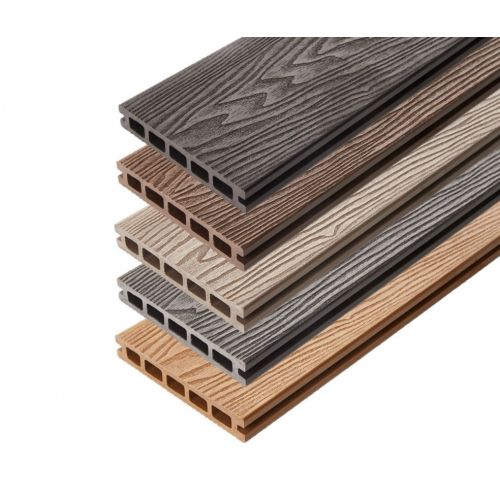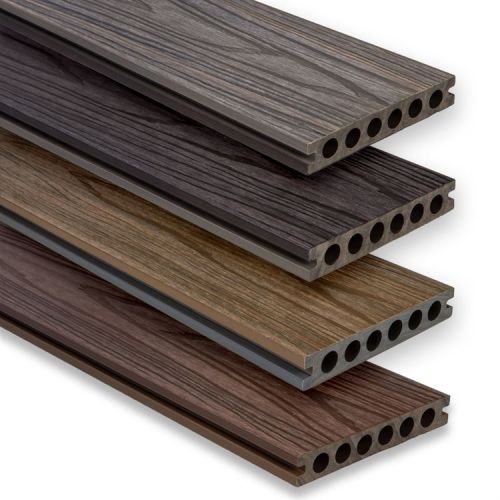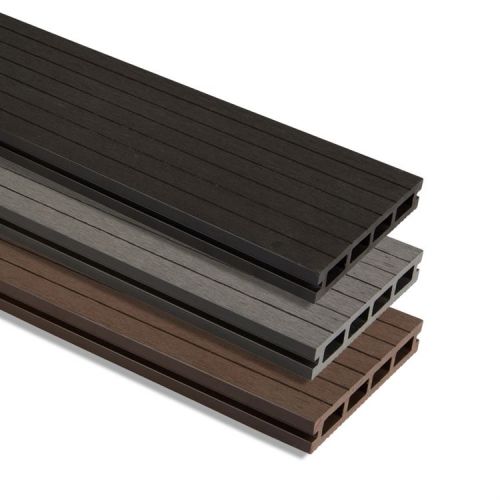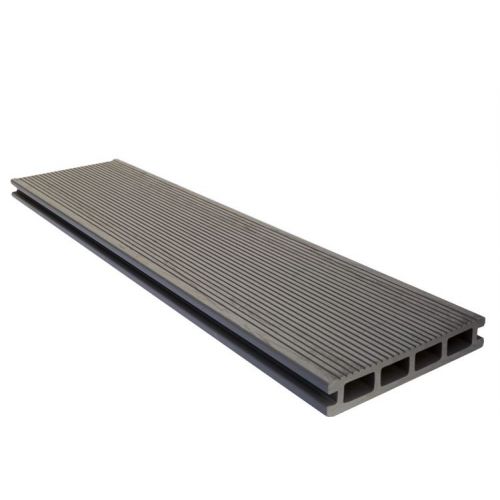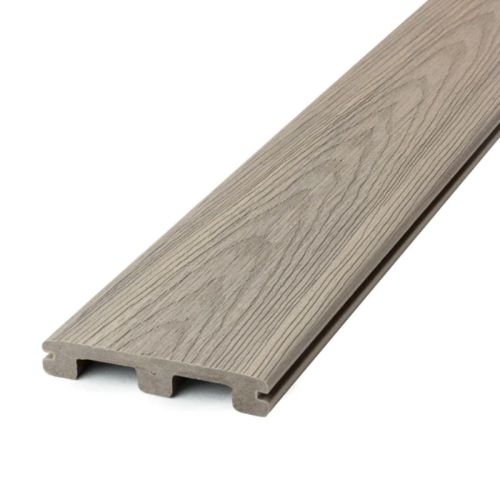Composite Decking
Composite decking is made from a mixture of recycled plastic and wood fibres. An ideal way to transform a space in your garden, composite decking boards share the beauty of natural timber but last three times as long with minimal maintenance. Indisti...
Frequently Asked Questions
What is Composite Decking?
Whilst traditional timber cladding is made solely from pine, this decking combines various materials for added durability. By combining two or more materials, composite cladding is resistant to weathering and therefore won’t splinter or warp. The most popular type of composite decking is wood plastic composite (WPC). This combines wood fibres with a plastic bonding agent to offer unrivalled strength and durability.
What Are The Differences Between Hollow and Solid Decking?
Whilst both hollow and solid decking can be used on a variety of projects, they offer a selection of benefits for particularly uses. Hollow decking, for example, is ideal for residential projects where there is little footfall or heavy loads. Solid decking, on the other hand, is purposely crafted for commercial projects where crowds congregate and heavy loads may be placed on the boards.
How Much Does Composite Decking Cost?
The cost of composite decking can vary from project to project. In most cases, however, you can expect the cost of composite decking to average £30 per square meter. Whilst the overall cost per square meter is higher than traditional timber decking, this type of decking is typically more cost effective in the long term. This is as you needn’t worry about staining the wood or treating it on an ongoing basis.
Are These Composite Decking Boards Easy to Fit?
Installing a composite deck in your garden couldn’t be any easier. You simply require the appropriate number of boards and a few added extras, such as joists and corner trims. It’s important to raise your deck off the ground in order for air to circulate. This can be achieved by using purposely designed joists on either a timber or concrete base. You must then use a combination of screws and sealants to ensure your decking boards and flashings are securely held in place.
Can This Decking Be Cut?
Most composite decking can be cut in a similar way to timber decking. You’ll simply require a fine-toothed circular saw for the greatest level of accuracy and cleanest finish. Using a handsaw will not only require considerably strength, but also result in unsightly ends. Whilst cutting along the width of the boards is relatively easy, it is considerably more difficult to cut along the lengths of a decking board. This is especially the case with hollow varieties.
Are These Decking Boards Slippery?
One of the biggest misconceptions of composite decking is that it is more slippery than alternative types of decking. However, the majority of these decking boards feature a slip resistant surface. This is typically in the form of either narrow or wide groves throughout the width of the each board. It is also recommended that you install your decking at a slight angle to prevent the build-up of water, which is often the primary cause of slippery surfaces.
